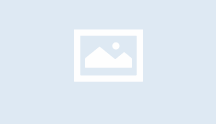Biology
Related Works
Content type
Digital Document
Abstract
This paper is a review, based largely though not exclusively on work from the authors' research group, of the role of Ca2+ channels in the actions of ethanol. The position is taken that an important consequence of the presence of ethanol in the region of excitable cells is a reduction in voltage-activation of membrane ion channels with a resulting decrease in cellular excitability. We suggest that excitable cells adapt to this effect by increasing the number of Ca2+ channels on the cell membrane. The channels are of a subtype which are inhibited by the dihydropyridine Ca2+ “antagonist” drugs. Although the mechanism of Ca2+ channel up-regulation is an effective short-term measure as adaptation against the acute effects of ethanol, we consider it may have detrimental longer term consequences including physical dependence and alcohol-related pathology including the death of excitable cells.
Origin Information
Content type
Digital Document
Abstract
Male Sprague-Dawley rats were made physically dependent on ethanol by exposure to ethanol vapour in inhalation chambers for 6–10 days. Animals were sacrificed immediately after removal from the chambers. After sacrifice, membrane preparations from cerebral cortex, heart, vas deferens and thigh skeletal muscle were prepared and studied to determine the characteristics of [3H]-nitrendipine binding. In membranes from cerebral cortex, the number of binding sites (Bmax) was increased 40% in preparations from ethanol-dependent rats compared to controls. Similar results were obtained in heart (Bmax increased 125%). vas deferens (Bmax increased 50%) and skeletal muscle (Bmax increased 33%). Binding affinity (Kd) in all these tissues was unchanged. Membranes from cortex and heart were studied more extensively. Displacement studies using other dihydropyridines and the effects of ionic composition on [3H]-nitrendipine binding provided no evidence to suppose that the binding sites induced by the development of ethanol dependence were from a population different from those in ontrol tissues. The results suggest a generalised ‘up-regulation’ of the dihydropyridine-sensitive subclass of voltage operated calcium channels in excitable tissues from ethanol-dependent rats.
Origin Information
Content type
Digital Document
Abstract
The genus Leptocereus comprises about a dozen species endemic to the Caribbean. The majority of these species are endemic to Cuba and all of them are threatened by extinction. In this paper, the flowers of L. scopulophilus are characterized considering the inner diameter of the perianth, the deep of the nectar chamber and the length of the floral tube. Flower development is described taking into account the anthesis, and the production and concentration of nectar. The mating system of this species is determined and flower visitors and pollinators are identified. The diameter inner of perianth is 1,84 cm, the length of floral tube is 2,16 cm and the deep of nectar chamber is 0,62 cm. The anthesis occurs in the afternoon around 18:30, the production of nectar begin among 21:00 and 22:00 and is extend until 10:00 of the next day, while the nectar concentration vary among 19,4 % and 16,2 % of sacarose. L. scopulophilus is exclusively out crossing and self-incompatible species. The flowers have a syndrome of chiropterophillous pollination, however, 14 visiting species have been identified. Only the nocturnal pollination by Monophyllus redmani bat is successful.
Origin Information
Content type
Digital Document
Abstract
The effects of different local food resources on the diets of some filipalpian stonefly nymphs (Aphanicerca spp.) were investigated. Animals from two headwater reaches, one primarily allochthonously driven and the other an open-canopied autochthonous-based system were compared. However, gut and stable carbon isotope analyses revealed no real differences in plecopteran diets between the systems, with leaf detritus being a major source of carbon, and algae contributing virtually nothing to their diets. δ15N analysis suggested that the animals obtained their nitrogen from sources other than leaf material itself, and it was hypothesized that this source was the microbial slime layer formed on decomposing leaves. It was concluded that the feeding behaviour of Plecoptera is consistent with that of shredders of leaf detritus, and as such they uphold River Continuum Concept predictions of large shredder populations being indicative of a predominance of coarse particles in headwater reaches. This study also highlighted the danger of making broad generalisations as to an organism's diet, based on the overall nature of the system, rather than on the micro- level of what may actually be available to small populations within a species.
Origin Information
Content type
Digital Document
Abstract
The relationships between the standing stocks of deposit-feeding benthic invertebrates and benthic chlorophyll-a, phaeopigment and total combustible organic matter were investigated at a series of coastal lagoons and in the type of intertidal soft-sediment sites from which the lagoons originated. Across all the sites, in Norfolk, UK, an inverse relationship occurred between (a) the amounts of chlorophyll-a and of other potential food materials and (b) the degree of coverage by water. The biomass of consumers also decreased with increased water coverage, so that the lagoons supported less biomass than the adjacent high-level intertidal sites. Further, the deposit-feeder biomass supported by unit food decreased with extent of water coverage.There was no evidence of any relationship between deposit-feeder and food biomass within any single site, in spite of the study period being selected to be that in which there was maximum likelihood of competition for microphytobenthic food. Whilst chlorophyll concentrations may set the maximum achievable level of consumer biomass at these sites, including in the deeper lagoons setting very low potential maximum population densities, the seasonal abundance patterns of the deposit feeders appear to be determined by other factor(s). [ABSTRACT FROM PUBLISHER]
Origin Information
Content type
Digital Document
Abstract
Glutathione serves the function of providing reducing equivalents for the maintenance of oxidant homeostasis, and besides it plays roles in intra- and intercellular signaling in the brain. Our purpose was to test the effects of depleting tissue glutathione by diethylmaleate (5.3 mmol/kg, intraperitoneal) on brain antioxidant metabolism, nerve growth factor levels, and cognitive performance in rats. Six hours after the treatment, glutathione level in the hippocampus dropped down to 30% of the mean value of vehicle-treated animals and glutathione peroxidase activity also declined. Twenty-four hours after the injection the values had been partially restored. Moreover, the hippocampal and cortical levels of nerve growth factor protein did not change in response to diethylmaleate treatment. Glutathione depletion did not influence the performance of animals in the step-through passive avoidance test, but impairs acquisition in the Morris water maze when given before training. However, when diethylmaleate was administered after acquisition in the same paradigm, it did not affect the retention tested at the following day. Our results suggest that glutathione status is important during acquisition, but not for retention, of spatial memory in maze tasks and they support the hypothesis of the oxidant/antioxidant equilibrium as a key piece acting in the regulation of brain function.
Origin Information
Content type
Digital Document
Abstract
ALS2 is an autosomal recessive form of spastic paraparesis (motor neuron disease) with juvenile onset and slow progression caused by loss of function of alsin, an activator of Rac1 and Rab5 small GTPases. To establish an animal model of ALS2 and derive insights into the pathogenesis of this illness, we have generated alsin-null mice. Cytosol from brains of Als2 mice shows marked diminu- tion of Rab5-dependent endosome fusion activity. Furthermore, primary neurons from Als2 mice show a disturbance in endo- somal transport of insulin-like growth factor 1 (IGF1) and BDNF receptors, whereas neuronal viability and endocytosis of trans- ferrin and dextran seem unaltered. There is a significant decrease in the size of cortical motor neurons, and Als2 mice are mildly hypoactive. Altered trophic receptor trafficking in neurons of Als2 mice may underlie the histopathological and behavioral changes observed and the pathogenesis of ALS2.
Origin Information
Content type
Digital Document
Abstract
Mammalian acetyl-CoA carboxylase (ACC) isoforms, ACC-1 and ACC-2, catalyze the formation of malonyl-CoA, a substrate for fatty acid synthesis and fatty acyl chain elongation, and a potent inhibitor of beta-oxidation. Based on the phenotype of knockout mice, ACC contributes significantly to overall body energy metabolism and is a potential drug target for the treatment of obesity and type II diabetes. Highly-purified ACC-1 undergoes a dramatic increase in mass following treatment with allosteric activators such as citrate, apparently due to linear polymerization of ACC dimers. The current studies were undertaken to explore (a) the extent to which ACC-2 undergoes polymerization and (b) to investigate whether other cellular proteins associate with and perhaps regulate the polymerization process. Size exclusion chromatography and sucrose gradient sedimentation studies show that ACC-2 undergoes very modest changes in molecular size upon allosteric activation, although the extent of polymerization of ACC-2 is enhanced in the presence of ACC-1. Isolation of the largest molecular forms of ACC, followed by mass spectrometry analysis, reveals that ACC "polymers" are multi-protein complexes. The proteins most reliably detected in ACC polymer fractions include tubulin, actin, fatty acid synthase, and heat shock proteins. The significance of the additional components of ACC complexes is evaluated from effects on the kinetics of the ACC reaction and of the polymerization process, as well as by cellular colocalization using fluorescence microscopy and co-immunoprecipitation studies. [ABSTRACT FROM AUTHOR]
Origin Information
Content type
Digital Document
Abstract
Chlamydia trachomatis is the most important infectious cause of infertility in women with important implications in public health and for which a vaccine is urgently needed. Recent immunoproteomic vaccine studies found that four polymorphic membrane proteins (PmpE, PmpF, PmpG and PmpH) are immunodominant, recognized by various MHC class II haplotypes and protective in mouse models. In the present study, we aimed to evaluate genetic and protein features of Pmps (focusing on the N-terminal 600 amino acids where MHC class II epitopes were mapped) in order to understand antigen variation that may emerge following vaccine induced immune selection. We used several bioinformatics platforms to study: i) Pmps’ phylogeny and genetic polymorphism; ii) the location and distribution of protein features (GGA(I, L)/FxxN motifs and cysteine residues) that may impact pathogen-host interactions and protein conformation; and iii) the existence of phase variation mechanisms that may impact Pmps’ expression. We used a well-characterized collection of 53 fully-sequenced strains that represent the C. trachomatis serovars associated with the three disease groups: ocular (N=8), epithelial-genital (N=25) and lymphogranuloma venereum (LGV) (N=20). We observed that PmpF and PmpE are highly polymorphic between LGV and epithelial-genital strains, and also within populations of the latter. We also found heterogeneous representation among strains for GGA(I, L)/FxxN motifs and cysteine residues, suggesting possible alterations in adhesion properties, tissue specificity and immunogenicity. PmpG and, to a lesser extent, PmpH revealed low polymorphism and high conservation of protein features among the genital strains (including the LGV group). Uniquely among the four Pmps, pmpG has regulatory sequences suggestive of phase variation. In aggregate, the results suggest that PmpG may be the lead vaccine candidate because of sequence conservation but may need to be paired with another protective antigen (like PmpH) in order to prevent immune selection of phase variants.
Origin Information
Content type
Digital Document
Abstract
We assessed HPV 16 and 18 antibody responses of female subjects enrolled in a 2- vs. 3-dose quadrivalent HPV (Q-HPV) vaccine trial (ClinicalTrials.gov NCT00501137) using the Merck competitive Luminex (cLIA) and total IgG Luminex (TIgG) immunoassays, and a pseudovirus neutralizing antibody (PsV NAb) assay. Subjects were enrolled in one of three groups: (1) 9–13 yr, 2 doses of Q-HPV at 0, 6 months (n = 259); (2) 9–13 yr, 3 doses at 0, 2, 6 months (n = 260); and (3) 16–26 yr, 3 doses at 0, 2, 6 months (n = 305). Sera were collected from all subjects at baseline, months 7 and 24, and from half the subjects at months 18 and 36. High correlation was observed between all three assays. At month 36, HPV 16 antibodies remained detectable in all subjects by all assays, whereas 86.4%, 99.6% and 100% of subjects respectively were HPV 18 cLIA, TIgG and PsV NAb (partial neutralization endpoint) seropositive. The proportion seropositive for HPV 18 by cLIA at 36 months was not significantly different for 2-dose girls vs. 3-dose adults (85.9% vs. 79.4%; p = 0.51), whereas the proportion for 3-dose girls was significantly higher than for 3-dose adults (95.3% vs. 79.4%; p < 0.01). The HPV 18 seropositive proportions by the TIgG and PsV NAb (partial neutralization endpoint) assays were the same for all subjects. High baseline HPV 16 and HPV 18 seropositivity was observed for the TIgG assay and it is unclear if all the detected TIgG antibodies are type-specific and/or neutralizing. For the PsV NAb assay, 90% and partial neutralization geometric mean titres were consistently 2–8-fold higher than for 100% neutralization, which enabled detection of HPV 18 NAb in subjects who lost detectable cLIA antibodies over time. We conclude that the PsV NAb assay is more sensitive than the cLIA, and likely more specific than the TIgG assay.
Origin Information


![Binding characteristics of the calcium channel antagonist [3H]-nitrendipine in tissues from ethanol-dependent rats Journal cover](/_flysystem/repo-service/styles/solr_grid_thumbnail/repo-bin/2025-10/0735-0414.png.jpeg?itok=oJb-cuYs)







